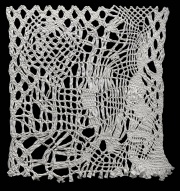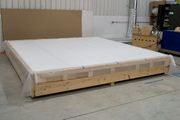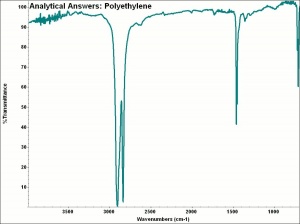Polyethylene
Description
A thermoplastic polymerin the polyolefin familywith a base formula of [-CH2-]n. Ethylene was first polymerized in 1933 by ICI in England and was commercially released as Alkathene in 1939. In 1954, Karl Ziegler developed a process for high molecular weight polyethylene that allowed it to be spun into fibers, molded into durable but flexible forms and cast as tough thin sheets. Polyethylene made by the original process is now called Low density polyethylene (LDPE; density = 0.92, melting pt=110-120 C) because if has extensive branching resulting in a softer, more flexible product with low tensile strength. Polymers made by the later Ziegler or Phillips processes are called High density polyethylene or (HDPE; density=0.95-0.96, melting pt=130-138C) because they lave a low degree of branching resulting in high tensile strength. HDPR tends to have a longer lifespan that LDPE. In general, polyethylenes are translucent waxy polymers with good impact strength that are widely used for packaging, coatings, liners, plastic sheets, wire coatings, underwater cables, containers, waste bags, toys, and squeeze bottles. Small amounts of additives (antioxidants, light stabilizers, slip agents, antistatic agents, flame retardants, pigments, etc.) are typically added to the final products. Polyethylene is recyclable and many products, such as Tyvek, contain the recycled polymer.
Examples include:
| Polyethylene Types | Forms | Products | 3 | High-Density Polyethylene (HDPE) | Closed cell foam
(non-crosslinked) |
Sealed Air Corp. formerly Dow; Ethafoam 180, 220, 400, 600, 900, 180 AS, 220 AS Pregis Corp; PolyPlank |
High-Density Polyethylene (HDPE) | Closed-cell foam (cross-linked) | ekisui Voltek; Volara
Zotefoams Ltd.; Plastazote MicroCell ? High-Density Polyethylene (HDPE) Spun bonded fiber DuPont; Tyvek Type 10 (stiff),14 (soft),16 (perforated)
Synonyms and Related TermsPE; polietileno (Esp.); polythylne (Fr.); polietilene (It.); polietileno (Port.); polyolefin; polythene; alkathene Examples: Volara; Ethafoam; Tyvek [DuPont]; Hi Core [Matra Plast]; Tupperware; Lennite; Corrulite; Cellu-Cushion; Trirod; Ethalux; Plastazoate; Colara; Correx
Applications
Personal RisksDow Corning: SDS Collection Risks
Environmental RisksPhysical and Chemical Properties
Working PropertiesLess transparent than polypropylene. Polyethylene has good chemical resistance. ComparisonsPhysical Properties for Selected Thermoplastic Resins General Characteristics of Polymers Resources and Citations
|
|---|



